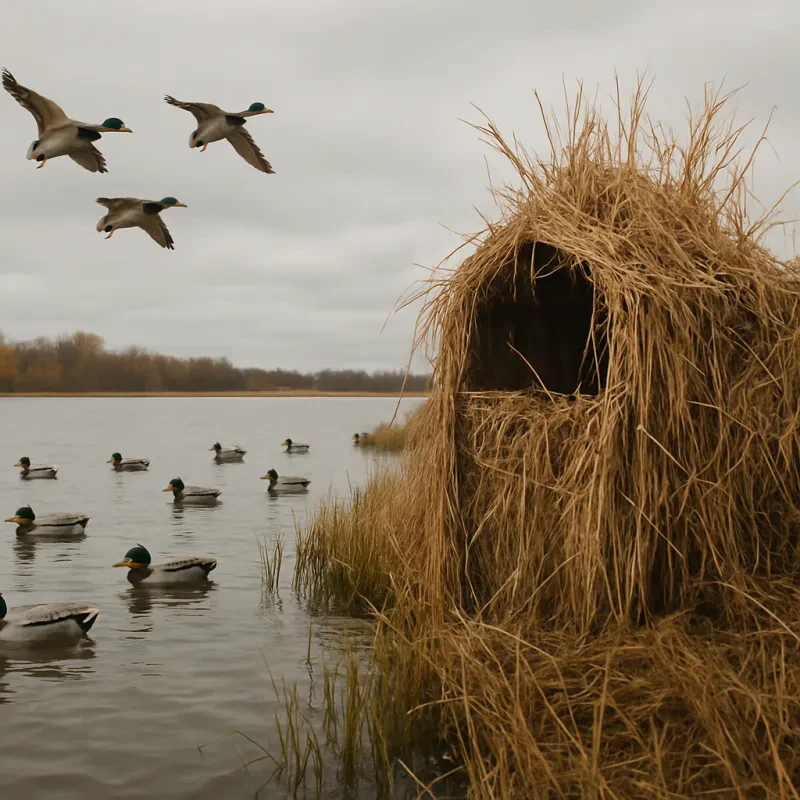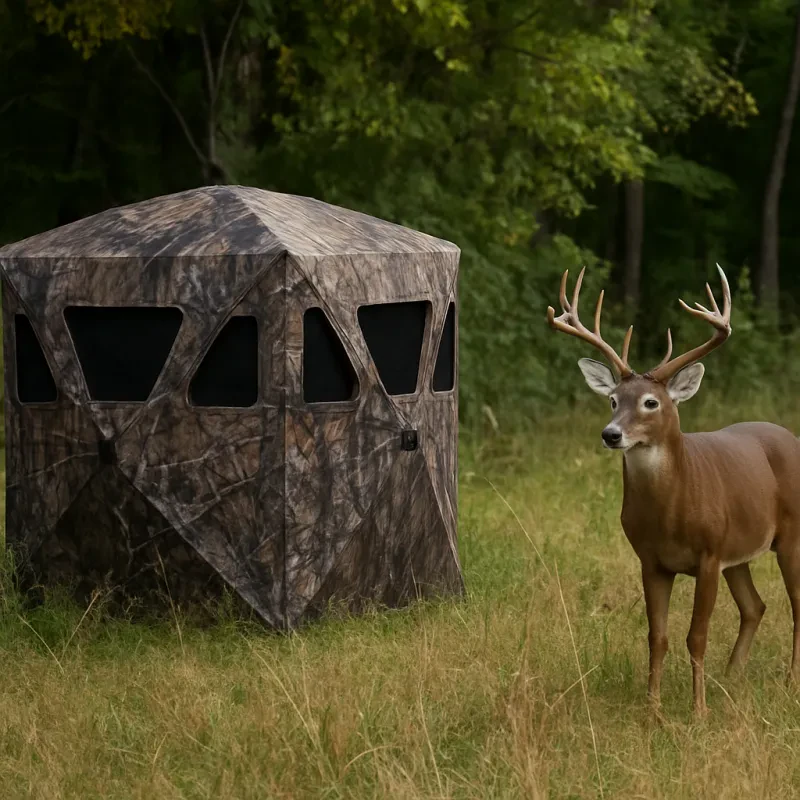When it comes to choosing your first hunting blind, understanding the different types available can make all the difference in your hunting experience. Hunting blinds come in various designs, each suited for specific environments and hunting styles. The most common types include ground blinds, tree stands, and pop-up blinds, each offering unique advantages and features.
Ground blinds are a popular choice for many hunters because they provide excellent concealment and comfort. These blinds are typically made from durable materials and can blend seamlessly into the natural surroundings. Some models feature flaps or windows that you can adjust for visibility and shooting range. If you're hunting in a flat area where it's essential to stay hidden from game, ground blinds are an excellent option for choosing your first hunting blind.
Tree stands, on the other hand, elevate you above the ground, giving you a bird's eye view of your surroundings. These types of blinds are great for hunting in wooded areas where animals might not notice you up high. Tree stands come in various styles, such as hanging stands or climbing stands, providing flexibility depending on your preferred hunting method. If you're considering a location with plenty of trees, this option may be very appealing when choosing your first hunting blind.
Finally, pop-up blinds offer the ultimate in convenience and portability. These blinds are lightweight and can be easily set up or taken down, making them ideal for hunters who like to move to different locations. They usually come in compact designs, making them simple to carry in your gear bag. For those uncertain about their hunting locations or who prefer to scout new areas, pop-up blinds are a fantastic choice when choosing your first hunting blind.
Key Features to Consider for Comfort
When Choosing Your First Hunting Blind, comfort should be one of your top priorities. You’ll likely be spending long hours waiting in your blind, so it’s essential to ensure that you have a pleasant experience. Look for features that will enhance your overall comfort while you're out in the field.
One key feature to consider is the amount of space inside the blind. Opt for a model that offers enough room for you to move around, stretch your legs, and store your gear. A cramped space can quickly lead to discomfort, especially during those extended hunting sessions. Think about how many people will be accompanying you and choose a size accordingly.
Temperature control is another vital aspect of comfort. Some hunting blinds come with insulation or padded walls that help regulate temperature and minimize noise. Weather-resistant materials can also protect you from rain and wind, ensuring you can focus on your hunting without worrying about the elements.
Lastly, don't overlook the seating options available in the blind. A comfortable chair or seat that provides proper support will make a significant difference in your comfort level. Look for a blind that either includes a good chair or has enough space to bring your own chair that suits your needs. By prioritizing comfort when Choosing Your First Hunting Blind, you'll set yourself up for a successful and enjoyable hunting experience.
Best Locations for Your Hunting Blind
When it comes to Choosing Your First Hunting Blind, location is everything. Selecting the right spot can dramatically increase your chances of a successful hunt. Some key factors to consider include the behavior of the game you’re after, the lay of the land, and accessibility. Here are some of the best locations to place your hunting blind.
Around food sources is one of the most popular choices. Animals rely on food to survive, so positioning your blind near a tasty buffet, such as a cornfield or natural foraging ground, can attract them right to you. Be sure to monitor the area in advance to see when animals are most active. This will help you choose the optimal time to set up your blind.
Another great location is near water sources. Wildlife needs water, especially during hot months or dry spells. Setting up your hunting blind near a pond, stream, or creek can lead to exciting encounters as animals come to quench their thirst. Again, spend some time observing the habits of your target species to ensure that you are in the right spot at the right time.
Lastly, consider natural cover like dense woods or thickets. These areas provide excellent concealment, allowing you to stay hidden while you wait for your prey. Look for game trails leading into these cover zones, which can give you clues about where animals are moving. Just make sure you choose a spot that gives you a clear line of sight for an effective shot.
Tips for Setting Up Your Blind
When it comes to Choosing Your First Hunting Blind, the setup is just as important as the type of blind you select. Here are some handy tips to help ensure you get the most out of your hunting experience.
First and foremost, location is key. Scout the area where you plan to set up your blind. Look for spots that offer good visibility while also providing cover. The best locations often have natural camouflage, like trees or bushes, to help you blend into the landscape. Pay attention to animal trails and feeding areas, as these are likely spots where wildlife will pass.
Once you’ve found the perfect spot, consider the approach. Be sure to set up your blind downwind of your target area. Odors travel with the wind, and staying downwind will help prevent spooking your prey. Also, think about the time of day you plan to hunt. Try to position your blind to take advantage of the light, ensuring you're not silhouetted against the sky during dawn or dusk.
Lastly, don’t forget about comfort and visibility. When Choosing Your First Hunting Blind, ensure it has enough room for you to sit comfortably and has proper windows for a good view. You may spend hours waiting for an animal to appear, so having space to move and a good sightline can make the experience much more enjoyable. Bring along some gear like cushions, snacks, and drinks to keep yourself comfortable while you wait.


